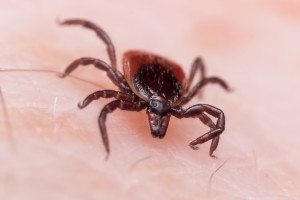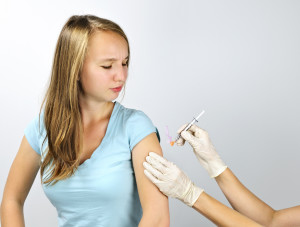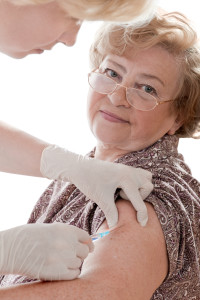 If you have a pet, you’re likely already aware of the threat of ticks, however ticks and the diseases they carry can be just as dangerous to adults and children. As we reach the peak of hot summer days this month, make sure you are familiar with the health risks associated with these tiny insects, how to avoid exposure to bites, and what to do if you find a tick on your skin or believe you’ve already been bitten.
If you have a pet, you’re likely already aware of the threat of ticks, however ticks and the diseases they carry can be just as dangerous to adults and children. As we reach the peak of hot summer days this month, make sure you are familiar with the health risks associated with these tiny insects, how to avoid exposure to bites, and what to do if you find a tick on your skin or believe you’ve already been bitten.
Ticks as Carriers of Disease
Across the United States, Western New York is among the areas most heavily populated by ticks. These small insects have been known to carry several potentially deadly diseases, including:
Lyme disease – A bacterial infection that can affect any organ of the body, including the brain, nervous system, muscles, joints, and the heart. Women infected with Lyme disease from a tick bite may pass the disease to their fetus, in rare cases, resulting in stillbirth.
Tularemia – A bacterial disease whose symptoms can range from mild to severe. Typically accompanied by a high fever, Tularemia may also cause a skin ulcer at the infection site, and swelling of regional lymph glands.
Ehrlichiosis – A bacterial infection that can cause flu-like symptoms that typically appear a week or two after a tick bite.
Babesiosis – A rare, severe, and sometimes fatal tick-borne disease caused by a microscopic parasite that infects red blood cells. Babesiosis may be transmitted from a pregnant woman to her fetus. Symptoms are not always prevalent, but may include fever, fatigue, and hemolytic anemia that lasts from days to months.
Anaplasmosis – A bacterial disease whose symptoms typically appear within one to two weeks after being bitten by an infected tick. Symptoms may include fever, headache, muscle pain, fatigue, chills, nausea/abdominal pain, cough, confusion, and rash.
Other diseases carried by ticks, not commonly found in Western New York, include:
- Rocky Mountain Spotted Fever
- Relapsing Fever
- Colorado Tick Fever
Tick Bite Signs and Symptoms
In many cases, if identification of a tick-transmitted disease is identified and treated quickly, the condition can be managed without life-threatening consequences. However, too often individuals never know that they were bitten by a tick until they experience the symptoms of one of the conditions listed above, which may not appear for a few days, or up to several weeks from the time of the bite.
Signs of a potential tick-borne illness may include:
- A red spot or rash near the location of the bite
- A full body rash
- A stiff neck
- A headache
- Muscle or joint pain
- Nausea
- Fatigue
- A fever
- Chills
- Swollen lymph nodes
What to Do if You Spot a Tick
If you find a tick on your body, it’s important to remove it quickly, but carefully. Follow these tips below for safe tick removal:
- Using pointed tweezers, grip the tick as close to the surface of the skin as possible.
- Firmly pull the tick straight upward with even pressure. Do not twist or pull too quickly, as you risk detaching the mouth parts of the tick and leaving it embedded in the skin. If this occurs, pull the mouth parts out with tweezers. If not possible, leave them to heal on their own.
- Once the tick has been removed, clean your hands and the bite area thoroughly with rubbing alcohol or soap and water.
- If the removed tick is still alive, do not squeeze it between your fingers. Dispose of it by submerging it in alcohol, or flushing it down the toilet.
Tick Bite and Infection Prevention
It typically takes over 24 hours of feeding for a tick infection to be transmitted. The sooner a tick can be safely removed, the less risk you’ll face for infection. The best way to protect yourself from a tick-transmitted illness, is to protect yourself from tick bites. Follow these tips to minimize your chances of a tick bite:
- Wear long sleeves and long pants when walking in wooded or grassy areas.
- When walking in wooded areas, stay in the center of trails and away from brush.
- Use a tick repellent that’s at least 20 percent DEET.
- After being outdoors in a tick-prone area, check your body for ticks, especially under arms, between legs, and in hair.
- Take a shower within 2 hours of being outdoors.
This summer, don’t resign yourself to staying inside and missing out on the best of the season. Enjoy the outdoors, but follow tick safety best practices and stay vigilant so that if you do identify a tick, it can be safely removed before contagion occurs. If you have any questions regarding ticks or the threats they pose, talk to your doctor.
More
 It’s easy to remember that smoking can put you at risk for cancer, but it can be easy to forget that the summer sun we love so much can be just as dangerous. According to the Skin Cancer Foundation, each year in the United States over 5.4 million cases of non-melanoma skin cancer are treated in more than 3.3 million people. Every year, there are more new cases of skin cancer than the combined incidences of breast, prostate, lung, and colon cancer, and over the past 30 years, more people have had skin cancer than all other cancers combined.
It’s easy to remember that smoking can put you at risk for cancer, but it can be easy to forget that the summer sun we love so much can be just as dangerous. According to the Skin Cancer Foundation, each year in the United States over 5.4 million cases of non-melanoma skin cancer are treated in more than 3.3 million people. Every year, there are more new cases of skin cancer than the combined incidences of breast, prostate, lung, and colon cancer, and over the past 30 years, more people have had skin cancer than all other cancers combined.
You don’t have to stay indoors all summer long to protect yourself from skin cancer, but you do need to understand the risks and make choices that will limit your direct sun exposure. Read on for our summer sun safety best practices, and tips for choosing the SPF that’s right for you.
Tips to Limit Your Sun Exposure
- Stay in the shade, especially between 10 a.m. and 4 p.m., and during late spring and early summer when UV rays are the strongest.
- Do not intentionally tan.
- Avoid sunburns. Getting sunburned just once every two years can triple your risk of developing melanoma skin cancer.
- Wear a broad-brimmed hat and sunglasses with UV-coating to protect your face and eyes.
- Wear long sleeves and pants of breathable fabric while out in the sun.
- Use extra caution around water, snow, and sand, as such surfaces reflect damaging rays, which can increase your chance of a sunburn.
- Protect yourself, even on cloudy or hazy days, as 80% of damaging UV rays can still reach you through the clouds.
- Wear sleeves or sunscreen even when driving. Harmful UVA rays can still reach you through window glass.
Sunscreen and SPF Facts
- Sunscreens are regulated as over-the-counter drugs by the U.S. Food and Drug Administration.
- SPF stands for sun protection factor. Sunscreens with a higher SPF generally offer more protection from the sun’s UV radiation.
- The SPF rating on a sunscreen product refers mainly to the level of UVB protection it offers. For example, SPF 15 blocks 93% of UVB radiation, while SPF 30 blocks nearly 97%. Higher sunscreens block slightly more UV rays, but no sunscreen can offer 100% protection.
- SPF clothing is 100% effective at blocking UV rays, making it more effective than regular cotton materials.
- The FDA has banned sunscreens from claiming to be waterproof or sweat proof, however there are products available that offer protection if you plan to be in the water. Water resistant products are generally effective for up to 40 minutes in water, while very water resistant products are generally effective for up to 80 minutes in the water.
SPF Recommendations
- When outdoors, always apply a broad spectrum (UVA/UVB) sunscreen of SPF 30 or higher. Such sunscreens protect you from both types of damaging UV rays.
- When choosing sunscreens, read the label. If a product has a skin cancer/skin aging alert in the Drug Facts section, it means it will only prevent sunburn and will NOT reduce the risk of skin cancer.
- Always choose a sunscreen that is water resistant, but especially if you anticipate extended outdoor activity.
- Apply one ounce of sunscreen (enough to fill a shot glass) to your entire body, and to dry skin, 15 to 30 minutes before going outside.
- Reapply sunscreen every two hours or immediately after swimming or excessive sweating.
- Don’t forget to protect your lips. Choose a lip balm that contains at least SPF 30.
- Rather than using a product that claims to offer SPF and insect repellent, use these products separately for best results.
- Check the date of your sunscreen. The FDA requires that sunscreens retain their strength for at least three years. If you have an old bottle at home, or one that has passed its expiration date, replace it.
- Sunscreens come in a variety of forms. Choose the one that best fits your needs:
- Creams – Best for the face and dry skin.
- Sprays – Often chosen by parents for their convenient application, just be sure to apply the proper amount.
- Gels – Best for hairy areas.
- Sticks – Best for application around the eyes.
If you have any questions or concerns regarding summer sun exposure, or your personal risk factors for skin cancer, talk to your doctor. Chouchani, Sayegh and Robinson MD are currently accepting new patients. Call for an appointment today.
More
The frequency with which you should visit your OBGYN changes with age, and of course when you’re pregnant. It’s also important to note that if you have any concerns regarding your health, or any changes in your health, you can and should make a non-routine appointment to visit your OBGYN at any time. Outside of health concerns, what follows are general guidelines for how often you should see your OBGYN.
Women Under Age 21
Women under age 21 are encouraged to meet with their gynecologist to ensure they have a resource for any questions or concerns. It is not, however, required for women under age 21to receive an annual pelvic exam and/or pap smear unless otherwise recommended by their physician.
Women Ages 21 – 29
In general, the American College of Obstetricians and Gynecologists (ACOG) recommends that all women over 21 and under 29 should see their OBGYN annually in order to have a pelvic exam. In addition, this annual well woman’s visit should include a general women’s wellness exam, breast exam, and a pap smear.
Women Ages 30 – 65
Women between the ages of 30 and 65 should also receive a pelvic exam every year, however as of 2012 the U.S. Preventive Services Task Force, American Cancer Society, and ACOG recommend that women ages 30 – 65 who have had negative pap test results in the past should have a combination pap and human papillomavirus (HPV) test only once every five years.
If within the last three years of turning 30, you’ve had an abnormal pap smear, a history of dysplasia, are HIV positive, or have been exposed before birth to diethylstilbestrol (a synthetic form of estrogen sometimes prescribed to pregnant women between 1940 and 1971), your gynecologist may still recommend that you receive a pap smear more frequently than once every two years.
Women Over Age 65
Women over age 65 without a history of precancerous cells or cervical cancer, and who have had either three-consecutive negative pap test results or two consecutive negative pap/HPV tests within the previous 10 years, do not need to continue receiving regular pap tests, as long as they have no history of precancerous cells or cervical cancer.
Women Who Have Had a Hysterectomy
Women who have had a hysterectomy and no longer have a cervix do not need to have regular pap tests, unless they’ve had precancerous cells in the cervix or a reproductive cancer, such as uterine cancer, in the past.
Sexually Active Women
While the guidelines above are general recommendations, it is also a best practice that women begin regularly seeing their gynecologist when they become sexually active, or at least within two to three years of becoming sexually active.
When You Should Schedule a Non-Routine Appointment
You can always contact your gynecologist for questions or concerns. You should definitely schedule a non-routine appointment if you experience any of the following:
- Vaginal pain or discomfort
- Abnormal or irregular bleeding not associated with your period
- Changes in your menstrual cycle that could be an indication of pregnancy or the onset of menopause
If You’re Pregnant
In general, women who are pregnant should meet with their OBGYN with the following frequency:
- Weeks 4 to 28: 1 prenatal visit a month
- Weeks 28 to 36: 1 prenatal visit every 2 weeks
- Weeks 36 to 40: 1 prenatal visit every week
If you have any risk factors associated with your pregnancy, your OBGYN may recommend more frequent visits.
Remember that your annual exam is also your time to discuss with your gynecologist any questions or concerns that you may have regarding stress, pregnancy or family planning, or any other related concerns or questions. As the recommendations, relative to the frequency of women’s health visits are continually being reexamined, always check with your doctor for the latest criteria.
If you are looking for a new Ob-Gyn physician and live in the Western New York area, give our office a call today. We are accepting new patients!
More

The small thyroid gland can be the cause of big health complications, especially for women. It is estimated that 20 million Americans suffer from some type of thyroid disease, and women are five to eight times more likely than their male counterparts to experience a thyroid disorder in their lifetime. Women should understand their potential heightened risk factors, and the symptoms and side effects that may indicate a thyroid complication.
About Your Thyroid
The thyroid is a small, butterfly-shaped gland at the base of your neck that produces a hormone that controls a variety of bodily functions. In particular, thyroid hormone impacts how quickly your heart beats, how many calories you burn, digestive functions, muscle control, bone maintenance, and even brain development. When you experience a thyroid problem, and your thyroid produces either too much, or not enough of this hormone, you may experience a variety of complicated health symptoms.
Thyroid Risks for Women
One in eight women will develop a thyroid problem during their lifetime. Women are particularly susceptible to thyroid complications especially after a pregnancy, and after menopause. In general, thyroid problems in women may cause:
- Menstrual period irregularities, including periods that are very heavy, very light, or very irregular. Some women may also experience amenorrhea, which occurs when their menstrual cycle stops for a prolonged period of time.
- Problems with ovulation, which can result in difficulty conceiving.
- Complications during pregnancy that may impact you and your fetus.
- Early menopause.
More complicated thyroid-related health conditions that impact women may include the following:
Hyperthyroidism. A condition in which your thyroid produces an excessive amount of hormone. As a result, many of your metabolic functions speed, including your heart rate. Symptoms may include rapid weight loss, anxiety, increased sweating, irregular periods, fatigue, and difficulty sleeping. Women with hyperthyroidism may have difficulty getting pregnant.
Hypothyroidism. A condition in which your thyroid does not produce enough hormone. As a result, your body’s functions, and in particular your metabolism, decelerate. Symptoms may include feeling fatigued, being overly cold, muscle weakness, weight gain, joint pain, depression, and heavy periods. Women with hypothyroidism may also have difficulty getting pregnant.
Pregnant women are at greater risk for developing thyroid complications, however diagnosing a problem with the thyroid is more difficult during pregnancy because of the hormone changes that occur at that time. Both hyperthyroidism and hypothyroidism can cause complications for mother and baby, so be sure to speak with your OBGYN if you are pregnant and think you may be suffering from a thyroid condition.
Thyroiditis. Inflammation of the thyroid, which sometimes occurs postpartum—affects 10 percent of women. Postpartum thyroiditis is often misinterpreted as postpartum depression, as it sometimes causes feelings of depression and sadness.
Postpartum thyroiditis often occurs in two phases. The first phase occurs one to four months after the baby is born and lasts for one to two months. During this time, women may experience side effects similar to those of hyperthyroidism. The second phase typically starts four to eight months after the baby is born, and may last six to twelve months. During this time, women may experience symptoms similar to that of hypothyroidism. It is important to note that not all women experience both phases of postpartum thyroiditis.
Thyroid Nodules. Affecting four times as many women as men, this condition is marked by swelling in one section of the thyroid gland. Some develop a single nodule in their thyroid, while others develop several nodules. If grown large enough, thyroid nodules may cause difficulty swallowing or breathing.
Goiter. A condition in which the thyroid becomes unusually enlarged, goiter impacts more women than men, and is more common is women before menopause. Symptoms include swelling of the neck, which may cause coughing, or problems swallowing or breathing.
Thyroid Cancer. Like goiter and thyroid nodules, symptoms may include swelling in the neck. Your doctor will conduct tests to determine if a swollen thyroid is the result of cancer. Women are three times more likely than men to develop thyroid cancer. You may be at an even greater risk of developing thyroid cancer if you have been treated with radiation therapy to the head or neck, have a history of goiter, or a family history of thyroid cancer.
For more information on thyroid disorders that could impact you or your baby if you are pregnant of looking to become pregnant, speak to your OBGYN about your risk factors today.
More
 The human papillomavirus (HPV) is a group of more than 150 related viruses newly infecting approximately 14 million people each year. It is estimated that about 79 million Americans are currently infected with HPV. With numbers this staggering, it is important to understand the risks associated with HPV, and how to keep you and your children safe from infection. The HPV vaccine has been proven to protect young people from the virus’ risks and side effects, however as with all preventive treatments, parents should be thoroughly informed about the vaccine and its risks before choosing to vaccinate their children. Read on for everything you need to know about the HPV vaccine.
The human papillomavirus (HPV) is a group of more than 150 related viruses newly infecting approximately 14 million people each year. It is estimated that about 79 million Americans are currently infected with HPV. With numbers this staggering, it is important to understand the risks associated with HPV, and how to keep you and your children safe from infection. The HPV vaccine has been proven to protect young people from the virus’ risks and side effects, however as with all preventive treatments, parents should be thoroughly informed about the vaccine and its risks before choosing to vaccinate their children. Read on for everything you need to know about the HPV vaccine.
Contracting HPV
HPV is transmitted through skin-to-skin sexual contact, making it the most common sexually transmitted infection. In rare cases, pregnant women can pass HPV to their babies during delivery. In these cases, the baby is at risk of developing recurrent respiratory papillomatosis (RRP), a condition where warts grow in the throat.
HPV Symptoms
Many who contract HPV never demonstrate symptoms—making it easier for them to transmit the disease unknowingly. 90 percent of HPV infections go away on their own within two years. Still, those diagnosed with the virus are at risk of developing genital warts, and in the most severe cases, cancer, including cervical, vaginal, vulvar, penile, anal, and throat cancer. The HPV vaccine protects against the development of HPV-related symptoms, as well as cancers.
Who Should Receive the Vaccine
The best time to administer the vaccine, for optimal effectiveness, is around ages 11 and 12 before boys and girls are sexually active. The vaccine also produces a more effective immune response when administered to preteens, making it even more important to vaccinate your children before they become teenagers.
Young adults who did not receive the vaccine before age 12 can still be effectively vaccinated, even if they have already had sex. Young women can be vaccinated up to age 26, and young men can be vaccinated up to age 21. Young men who have sex with other men or who have weakened immune systems, including those who are HIV positive, can be vaccinated up to age 26.
Vaccine Administration
The vaccine is administered in three shots. The second must be given one to two months after the first, and the third must be given six months after the first. Individuals who wait longer than is recommended between shots are still encouraged to finish the series. There is no need to restart the shot series for best results. Research shows that those who receive the entire series are protected for a period of 8-10 years.
Vaccine Effectiveness
Clinical trials have shown that the vaccine provides almost 100 percent protection against precancers and genital warts. In addition, since 2006 when the vaccine became recommended for preteens, researchers have identified a 56 percent decrease in vaccine type HPV infections among young women in the United States, and that overall rates of reported genital wart cases are decreasing as well.
Vaccine Safety
The safety and effectiveness of the HPV vaccine continues to be monitored by the Centers for Disease Control and Prevention (CDC) and the Food and Drug Administration (FDA). To date, no serious health risks have been associated with the vaccine. As with all vaccines, there have been reported side effects. These include pain and redness at the injection site, dizziness, fever, fatigue, muscle or joint pain, and nausea. Some also report brief fainting spells, as may occur after any procedure or vaccination. Severe allergic reactions are rare. Those who are allergic to any of the vaccine components should not receive the vaccine.
For more information on the risks related to HPV, and how vaccination can protect you and your children, speak with your OBGYN today.
More
 Each year, 5 to 20 percent of Americans contract the flu virus, and 200,000 are hospitalized due to complications. Despite the number of people who fall victim to the flu each season, some Americans still hesitate to receive the vaccine. For many, the hesitation comes from misperceptions regarding vaccination side effects and effectiveness. To ensure you understand the real risks and rewards, learn the facts regarding the flu vaccine and how it can protect you from contracting the illness this flu season.
Each year, 5 to 20 percent of Americans contract the flu virus, and 200,000 are hospitalized due to complications. Despite the number of people who fall victim to the flu each season, some Americans still hesitate to receive the vaccine. For many, the hesitation comes from misperceptions regarding vaccination side effects and effectiveness. To ensure you understand the real risks and rewards, learn the facts regarding the flu vaccine and how it can protect you from contracting the illness this flu season.
Myth: Receiving the flu vaccine can give you the flu.
Perhaps the most common misperception, receiving a flu vaccine has not been proven to cause the flu.
Fact: Side effects may occur after receiving the flu vaccine.
Vaccine side effects may include soreness at the injection site, redness, swelling, low-grade fever, and headache.
Myth: Only adults should receive the flu vaccine.
According to the Centers for Disease Control and Prevention (CDC), everyone six months old and older should receive an annual flu vaccine. Vaccinations are particularly important for those at high risk for serious flu complications, such as the elderly, and those with compromised immune symptoms.
Fact: Some may be susceptible to allergens in the flu vaccine.
Some may experience life-threatening allergies to the flu vaccine or its ingredients, which include eggs, gelatin, and antibiotics. Talk to your doctor if you have any allergies. He or she will be able to tell you if the flu vaccine is right for you.
Myth: There is only one flu vaccine appropriate for all ages.
There are different types of flu vaccinations and strengths. Your doctor will tell you which version of the vaccine is right for you. A high dose flu vaccination is available for those age 65 and older. It is recommended that adults younger than 65 should not get the high-dose flu shot or the flu shot with adjuvant. Those younger than 18 or older than 64 years old should not get the intradermal flu shot.
Fact: The CDC recommends the injectable flu vaccination.
The CDC recommends that during the 2016 to 2017 season, individuals should receive an injectable flu vaccine. The nasal spray flu vaccine is not recommended during 2016 to 2017.
Myth: It’s better to get the flu than the flu vaccine.
The flu virus may cause severe complications and health risks, especially among the elderly, children, and those with certain chronic health conditions such as asthma, diabetes, or heart disease. Getting vaccinated is a safer choice.
Fact: It is best to receive a vaccine every year.
The CDC recommends receiving the flu vaccine annually for those six months old and older. An individual’s immune protection from vaccination declines over time, making annual vaccination the best way to protect against the complications of the flu.
Myth: Getting vaccinated twice offers added protection against the virus.
Studies have not shown any added benefits or effectiveness when adults receive more than once dose of the influenza vaccine. This is also true among those with weakened immune systems, or the elderly.
Receiving an annual flu vaccine has been proven to be the best way to protect yourself against the complications of the flu. Talk to your doctor today about the risks and rewards of receiving the flu vaccine, and make the decision that is right for you.
More
 Fact: Almost 13,000 new cases of invasive cervical cancer will be diagnosed in the United States, and over 4,100 female lives will be lost due to the disease this year alone.
Fact: Almost 13,000 new cases of invasive cervical cancer will be diagnosed in the United States, and over 4,100 female lives will be lost due to the disease this year alone.
These frightening facts bring to light the terrible reality of the impact that cervical cancer is having on women across the nation. What gives us hope, despite these statistics, is the fact that cervical cancer is the easiest gynecologic cancer to prevent if women take part in regular screenings and follow-ups. There are two tests that your doctor can perform to identify the presence of cervical cancers:
- The Pap test, or Pap smear – This test can identify precancers, or cell changes on the cervix that have the potential to become cervical cancer cells if not properly treated.
- The HPV test – This test can identify human papillomavirus, a virus that can trigger cervical cancer development.
Screening Guidelines
It is generally recommended that women begin receiving regular Pap tests at age 21, and that women receive the test every three years between the ages of 21 and 65. Or, women age 30 and older can obtain the Pap test every five years, instead of three, if the procedure is combined with HPV testing.
Risk Factors
Certain risk factors may increase your chances of being diagnosed with cervical cancer. If you are at a greater risk for the disease, your doctor may recommend more frequent testing. Cervical cancer risk factors include:
- A previous diagnosis of cervical cancer.
- A previous Pap smear that showed precancerous cells.
- Having been exposed to diethylstilbestrol (DES) before birth.
- Being HIV positive.
- Having a weakened immune system due to an organ transplant, chemotherapy, or chronic corticosteroid use.
Cervical Cancer Prevention
While it is possible to prevent cervical cancer is through the early detection of precancerous cells, there are other preventive measures that women can take to lower their risk of developing this form of cancer. To help protect yourself from cervical cancer follow these preventative measures:
- Avoid contact with the human papillomavirus (HPV). HPV is the main cause of cervical cancer. Although HPV can be spread during sex, it can also be spread through skin-to-skin contact with an infected body area.
- Get vaccinated against HPV. It is important to understand that HPV vaccines only work to prevent the HPV infection, however they will not treat an existing infection. The Federal Advisory Committee on Immunization Practices (ACIP) recommends that girls ages 11 to 12 begin the vaccination series for HPV.
- Use condoms during sex. The effective use of condoms will help protect you from contracting HPV.
- Limit your number of sexual partners. The greater your number of sexual partners, the greater your chances of being exposed to HPV.
- Don’t smoke. Smoking may increase your risk of developing cervical pre-cancer, and cancer.
If you have questions regarding you risk factors, or steps you can take to lower your risk of developing cervical cancer, talk to your doctor today.
More
 In recent years there has been an increasing amount of dialogue and debate about the benefits of immunizations for newborns. While every parent needs to decide how best to safeguard the health of her child, it is essential to understand the benefits of immunizations, and the risks involved in choosing not to immunize. Before you choose to say “no” to vaccinating your baby, consider the following proven health benefits.
In recent years there has been an increasing amount of dialogue and debate about the benefits of immunizations for newborns. While every parent needs to decide how best to safeguard the health of her child, it is essential to understand the benefits of immunizations, and the risks involved in choosing not to immunize. Before you choose to say “no” to vaccinating your baby, consider the following proven health benefits.
Immunizations are Life Savers
Immunizations can save your child’s life. Today’s vaccines have proven to protect children from complex and deadly diseases that, in the past, took the lives of thousands of children each year. Vaccinations have helped to all but eliminate such diseases as smallpox, diphtheria, tetanus, yellow fever, whooping cough, polio, and measles. To continue to keep children safe from these diseases, each generation must maintain immunity through the use of proven childhood vaccinations.
Immunizations Help Prevent Lifelong Disabilities
Some vaccine-preventable diseases, even if not deadly, can result in prolonged health complications and disabilities. For example, pertussis, or whooping cough, can cause such complications as pneumonia, seizures, or brain damage, while polio can result in life-long paralysis. Since there is no cure for diseases such as polio, vaccination is the only way to protect children from possible lifelong disabilities associated with these diseases.
Immunizations are Safe
For parents fearing the potential risk factors of vaccinations, take comfort in knowing that vaccinations are both safe and effective. All vaccines are heavily tested and their results are monitored before being mass produced and distributed. While such mild side effects as discomfort, redness and tenderness at the injection site are known to occur, such factors should be of minimal concern compared to the risks of the diseases that vaccines prevent.
Immunizations are Required by Many Institutions
Many schools and health care facilities require children to be vaccinated before admittance. By choosing not to vaccinate your child, you may be limiting your child’s future opportunities for care and education.
Immunizations Protect the Future
Thanks to vaccinations, small pox is one disease that has been completely eradicated. Today, immunizations save an estimated 9 million lives around the world each year. Despite these advances, scientists believe that an additional 16 million deaths could be avoided annually if effective vaccines were deployed against all vaccine-preventable diseases. With more parents willing to vaccinate their children today, we have a better chance of protecting children tomorrow from the continued threat of preventable diseases and their long-term effects.
If you are considering whether or not to vaccinate your child, talk to your child’s doctor about the benefits and potential side effects of immunizing your newborn. Every parent wants to protect his child from health threats and give him the best chances to live a long and healthy life. Regular immunizations should be a part of every parent’s disease prevention plan for their child. With generations of proven effectiveness, parents can rest assured that the benefits of vaccinating their child will far outweigh any temporary discomfort.
More
 According to Cancer.org, approximately 1 in 8 women in the United States will develop invasive breast cancer during their lifetimes. This Mother’s Day, and every day, we remember that each year we lose mothers, daughters, sisters and friends to breast cancer while scientists rush to find a cure. As we hope and wait for a day when the world will be cancer free, there is something that women can do to help them to understand their potential risks and take proactive steps toward a potential early diagnosis and treatment plan. The breast cancer (BRCA) gene test is helping women to understand if they may be more susceptible to developing cancer, based on their genetic history, so that they can the necessary steps to fight back against breast cancer.
According to Cancer.org, approximately 1 in 8 women in the United States will develop invasive breast cancer during their lifetimes. This Mother’s Day, and every day, we remember that each year we lose mothers, daughters, sisters and friends to breast cancer while scientists rush to find a cure. As we hope and wait for a day when the world will be cancer free, there is something that women can do to help them to understand their potential risks and take proactive steps toward a potential early diagnosis and treatment plan. The breast cancer (BRCA) gene test is helping women to understand if they may be more susceptible to developing cancer, based on their genetic history, so that they can the necessary steps to fight back against breast cancer.
What is the BRCA Gene Test?
The BRCA gene test is a blood test that looks to identify mutations in those genes called BRCA1 and BRCA2 that help to maintain normal cell growth. Changes in these genes can help determine a woman’s likelihood for developing breast cancer as well as ovarian cancer during her lifetime. Women with mutated BRCA1 or BRCA2 genes are at a higher risk of developing the disease. It is important to understand that the BRCA gene test is not a way to identify if a woman has already developed cancer. It only tests for the presence of the mutated BRCA genes.
What Causes the Gene Mutation?
A mutation in the BRCA1 and/or BRCA2 genes can be inherited from either the mother’s or the father’s side of the family. It is estimated that approximately 2 or 3 out of 1000 adult women have a BRCA gene change.
Who Should be Tested?
Only women with a strong family history of breast or ovarian cancer, and women with a previous diagnosis, are encouraged to take the BRCA gene test. Before and after testing women are also encouraged to complete genetic counseling, a process that aims to help women to understand the benefits, risks, and possible outcomes of the test.
Other Factors to Consider
Women who meet any of the following criteria should ask their gynecologist or primary care physician if they are a candidate for the BCRA gene test:
- Have multiple cases of breast cancer in the family
- Have at least one family member who has had BRCA-related cancer
- Are an Ashkenazi Jew (a Jewish person whose ancestors came from Eastern Europe)
- Have one or more male family members who have had breast cancer
- Have been diagnosed with breast cancer before age 50
- Have had breast cancer in both breasts
- Have had breast cancer and ovarian cancer
What are the Potential Test Results?
The BRCA gene test may indicate that cells are normal, abnormal, or that the test results are uncertain. If the results are normal, or negative, it means the test identified no change in the BRCA1 or BRCA2 genes. If your results are abnormal, or positive, it means the test identified either BCRA1 or BRCA2 gene changes. Women with positive BRCA results have about a 35 to 84 percent chance of developing breast cancer and about a 20 to 40 percent chance of developing ovarian cancer. If the test results are uncertain, it may mean that a gene change is present but it cannot be determined how significant the change is, or if the change is indicative of an increased risk for developing cancer.
It is important to understand that only about 5 to 10 percent of breast and ovarian cancers are linked to the BRCA1 or BRCA2 gene change. A negative BRCA test may not guarantee a cancer-free lifetime, but for those at higher risk, genetic knowledge can be the first step in becoming extra vigilant, educated, and prepared with a plan for regular cancer screenings.
Until the Mother’s Day when we can celebrate a cancer-free world, consider your family history and speak with your doctor about whether or not the BCRA gene test is right for you.
More
 Diabetes is a dangerous health condition in which blood glucose levels rise higher than normal, a state known as hyperglycemia. For those suffering from type II diabetes, since their bodies do not properly use insulin, excess levels of the hormone are produced by the pancreas. Over time, the pancreas cannot create enough insulin to manage glucose levels, resulting in dangerous side effects.
Diabetes is a dangerous health condition in which blood glucose levels rise higher than normal, a state known as hyperglycemia. For those suffering from type II diabetes, since their bodies do not properly use insulin, excess levels of the hormone are produced by the pancreas. Over time, the pancreas cannot create enough insulin to manage glucose levels, resulting in dangerous side effects.
Type II diabetes is the most common form of the disease, representing about 90 to 95 percent of all diagnosed cases. It is estimated that 29.1 million people in the United States suffer from diabetes, 8.1 million of who may be undiagnosed and unaware of their condition. As if these statistics aren’t great enough cause for concern, experts predict that the number of cases of type II diabetes is on the rise. The good news is that many of the risk factors for type II diabetes are preventable. By making conscious choices to lead a healthy lifestyle, you can help to reduce or even eliminate the likelihood for being diagnosed with the type II diabetes. If you fear that you or someone you love may be at risk for the disease, read these healthy tips that will help you lower your odds of being diagnosed with this painful, and potentially deadly condition.
Manage Your Weight.
An overweight or obese body mass index (BMI) is one of the greatest risk factors for developing type II diabetes. In a recent study, individuals who lose only seven percent of their initial body weight and exercising regularly reduced their risk of developing diabetes by almost 60 percent.
Get Active.
The first step toward diabetes prevention is getting out and getting active. Regular physical activity can help you to lower your weight and blood sugar levels, and increase your sensitivity to insulin, all things that will help you to lower your risk of developing type II diabetes.
Quit Smoking.
As if you didn’t need another reason, if you are a smoker, it’s time to kick the smoking habit. Tobacco use can increase blood sugar levels that lead to insulin resistance. Studies show that individuals who smoke more than 20 cigarettes a day almost double their risk of developing diabetes compared to nonsmokers.
Eat Foods High in Fiber.
This simple ingredient can make a significant difference in lowering your risk of developing diabetes. Fiber helps to improve blood sugar control, lower the risk of heart disease, and promote weight loss. In addition, when you eat fiber, you are likely to feel fuller, for longer, reducing your desire to snack on sugary, calorically-dense foods. Fruits, vegetables, beans, whole grains, seeds, and nuts are all foods high in fiber. Incorporate more of these healthy foods into your diet to help manage your diabetes risk factors.
Choose Whole Grains.
There are many benefits of incorporating whole grains into your diet, including reducing your risk for type II diabetes. The mighty whole grain can help you to maintain proper blood sugar levels. When browsing the aisles of the grocery store, choose whole grain product options whenever possible, especially when choosing pastas, breads, and cereals.
Eat Smaller Meals.
When you eat only one or two large meals per day that are high in calories, fat, sugar, and/or sodium, your glucose levels spike. Eating more small, well-balanced meals throughout the day can lower your chances of experiencing unsafe spikes in blood glucose levels, and can ultimately lower your risk of diabetes.
Reducing your risk of diabetes is as simple as maintaining a healthy diet and being active every day. If you have questions or need help adopting healthy lifestyle habits, contact your doctor today. And if you are in Western New York and looking for a new Ob-gyn, please consider our practice.
More
 If you have a pet, you’re likely already aware of the threat of ticks, however ticks and the diseases they carry can be just as dangerous to adults and children. As we reach the peak of hot summer days this month, make sure you are familiar with the health risks associated with these tiny insects, how to avoid exposure to bites, and what to do if you find a tick on your skin or believe you’ve already been bitten.
If you have a pet, you’re likely already aware of the threat of ticks, however ticks and the diseases they carry can be just as dangerous to adults and children. As we reach the peak of hot summer days this month, make sure you are familiar with the health risks associated with these tiny insects, how to avoid exposure to bites, and what to do if you find a tick on your skin or believe you’ve already been bitten.








